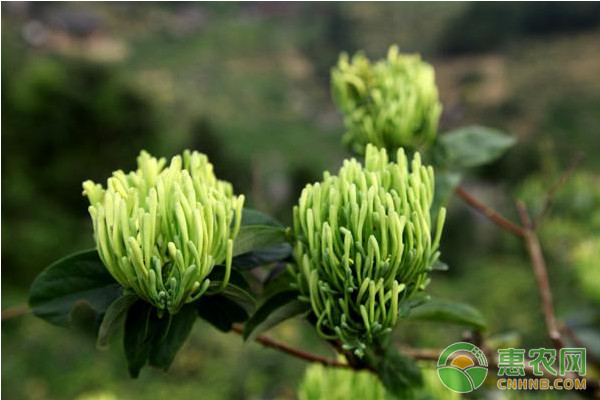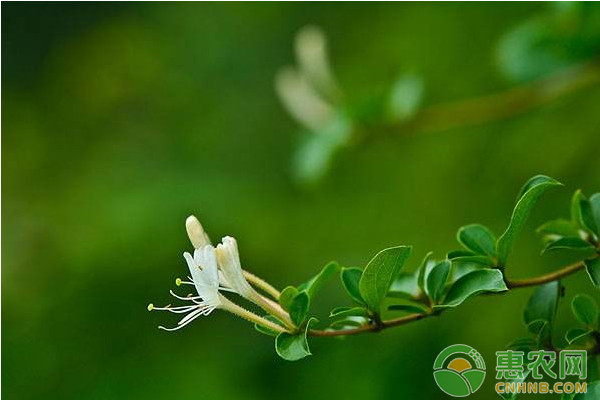Today, Huinong.com will compile knowledge about the honeysuckle growers in the autumn of Lufengwang No.1 honeysuckle planting technology and processing benefits in Mentougou District. In 2014, in the Qijiazhuang Village of Qingshui Town, Lufeng Wang will be planted in different seasons in spring and autumn. The survival rate test of No. 1 honeysuckle variety showed that the survival rate of spring planting was only 30%, and under the same ground conditions, the survival rate of planting in autumn increased to over 90%. 1 Honeysuckle planting survival test 1.1 Basic situation of the test The project planting and construction site is located in Qijiazhuang Village, Qingshui Town. The former crop is corn and the soil is medium. Qingshui Town has special geographical conditions, and the climatic conditions formed by high altitude are suitable for the cultivation of Chinese herbal medicine varieties. In combination with the demand for industrial restructuring in recent years, the area and variety of Chinese herbal medicines have increased year by year. Because honeysuckle prefers a warm, humid, sunny climate, the root system is developed, and the adaptability is very strong. It is cold-tolerant and drought-tolerant, and can be cultivated in plains and mountainous areas. Through the preliminary inspection of the project, the Lufeng Wang No. 1 honeysuckle variety was finally introduced in Shandong for planting and processing. The initial test area is 2 mu, and the planting scale is 100 mu. The processing of the products relies on the processing line of the Huanghua tea processing plant of the professional cooperative of Beijing Afunda and Astragalus. 1.2 Test variety and plant survival rate 1.2.1 Variety characteristics Lufengwang No. 1 honeysuckle is an evergreen vine small shrub with well-developed roots and strong adaptability to the environment. It can be planted in mountainous areas, hills and plains. The three-year plant height is 1.5 to 2 cm, the main stem diameter is 3 to 4 cm, and the tree width is about 2 cm. The flower buds are dense and clustered. Its flowers are erect and more branched, young branches are blue-green, old branches are brown, strips are peeled off in the skin, and there is no obvious entanglement in the upper part of the long branches. Branches and stems are as thick as chopsticks, thicker than ordinary honeysuckle. Leaves opposite, leaves shortly obovate. Sometimes ovate-lanceolate, sparsely ovate or obovate. The base of the leaf is round or nearly heart-shaped. It has a rough margin of 3~6cm and a hip of 3~3.5cm. The whole leaf is light green. The leaf surface is densely pilose. The petiole is 0.5~1cm long and densely pubescent. The leaves are thick and the leaf stems are twice as large as the common honeysuckle leaves. The upper leaves of the branchlets are densely covered with short bracts on both sides, and the lower leaves are often smooth and hairless and the lower ones are blue-gray. 1.2.2 Planting survival rate test In 2014, 2 mu of land was selected in Qijiazhuang of Qingshui Town to carry out the experiment of honeysuckle survival rate in different seasons. Planting experiments were carried out in different seasons in spring and autumn, from March to April in spring and 8 to 9 in autumn. month. The specific test results are shown in the attached table. According to the results of the above survival rate, in 2015, the autumn planting method was adopted to promote the planting of 100 acres of Lufengwang No. 1 honeysuckle in Qijiazhuang, Qingshui Town. Fresh flowers and stamens were picked during the flowering season, and appropriate processing was carried out to explore economic benefits. 2 High-yield cultivation techniques 2.1 Site preparation After spring defrosting, the soil is applied for 1t, and then the planting hole is excavated. The planting hole is excavated according to 40cm×40cm×30cm; the row spacing is 1m×1m or 1m×2m, and 330 plants are planted in acre. Choose high-quality strong seedlings for planting, properly trim the thick and strong seedlings with a diameter of 0.5-0.8cm before planting, and set the dry height to 30~40cm; the seedlings with a diameter below 0.5cm will have a dry height of 25~30cm, and cut off the base and trunk. The thin branches reduce nutrient consumption. Planting depth of 5 ~ 7cm is appropriate. 2.2 Planting time In the autumn, the temperature dropped from August to September. After planting, there was a certain root growth period. After the spring, the roots grew fast, and the branches were logistically guaranteed. The choice of planting during this period greatly improved the survival rate. 2.3 Field management After planting, cover the soil with water, and carry out field management measures such as weeding and pest control. 2.4 Honeysuckle harvest Lufeng Wang No. 1 has a high yield of honeysuckle. The average annual yield of dried plants per plant is 1~1.5kg per year, and the average yield per acre is 260-350kg, which is 3-4 times higher than other common varieties. The best time to harvest is early morning and morning. The flower buds harvested at this time are not easy to open, the nutrients are sufficient, the smell is strong, and the color is good. The concentrated stacking time after harvesting should not be too long, and the drying and drying should be carried out in time. 3 Honeysuckle processing process Honeysuckle tea production process innovation, honeysuckle flower buds, honeysuckle leaves, honeysuckle vines as raw materials to develop honeysuckle lozenges and honeysuckle products. Honeysuckle tea specific process: raw material screening, classification → cleaning → sun drying 2 h → cooking → drying → cooking → drying → careful screening and classification → finished products → packaging → sales. 4 Benefits 4.1 Economic benefits Honeysuckle is a treasure, and the economic return of introducing honeysuckle is very rich. One acre of honeysuckle planted 330 points, can enter the flowering period in the third to fourth years, yielding 260-350kg of high-quality dried flowers per mu. According to the average market price of 30~100 yuan/kg in recent years, the output value per mu can reach 7,000 yuan. If scientific management is implemented, it will last for more than 10 years. 4.2 Medical benefits of honeysuckle Honeysuckle is a valuable Chinese herbal medicine in China. The famous doctors record the effect of honeysuckle on the treatment of "heat and body swelling". Li Shizhen said in the "Compendium of Materia Medica": "Honeysuckle can treat all rheumatism and all kinds of swollen poison, phlegm and bayberry." It is said that honeysuckle is not only a good medicine for "regulating the wind, removing phlegm, dispelling phlegm and corpse", but also a good agent for "heat dissipation, detoxification, swelling and treatment of sores". Recently, American scientists have announced that honeysuckle can prevent the world's chronic AIDS that has been untreated. With the continuous advancement of science and technology in the world, the understanding of honeysuckle at home and abroad has been further improved. According to modern pharmacological analysis reports, the main medicinal ingredient contained in the flowers, stems and leaves of honeysuckle is chlorogenic acid. Chlorogenic acid has been clinically proven to have a broad spectrum of antibacterial, anti-inflammatory and antiviral effects. Honeysuckle also contains saponins, inositol, volatile oil and flavonoids; the stem contains saponin, saponin and cellulose; the leaves contain honeysuckle, tannin, hibiscus, lilac, etc.; Useful substances. Modern medical research has proved that honeysuckle has strong antibacterial ability against streptococcus and meningococcus. Honeysuckle has a good effect on the treatment of influenza and many inflammations. 4.3 Ecological benefits of honeysuckle The root system of honeysuckle is particularly developed and adaptable. Honeysuckle branches are sprawling, and the leaf area is dense. The three-year-old honeysuckle plant usually has 300 branches. The leaves and branches are within the range controlled by the branches. The wind can't scrape the soil, and the raindrops can't splash the ground. . Honeysuckle has strong drought tolerance, poor tolerance, water flood resistance, salt and alkali resistance and the ability to maintain soil and water. Finally, Xiaobian wants to say that honeysuckle is full of treasures and the market benefits are also good, so if you want to improve your own income, you must upgrade your skills. disposable trocar, spc trocar, laparoscopic trocar, thoracic trocar Hunan Yaoming Medical Technology Co, Ltd , https://www.yaominmed.com

High-yield Cultivation Techniques and Processing Benefit Analysis of Jinyinhua Luwangfeng No.1